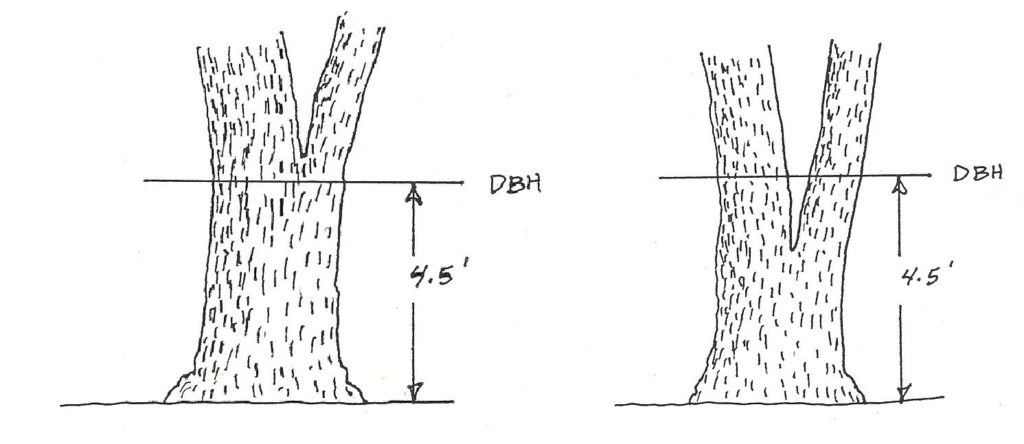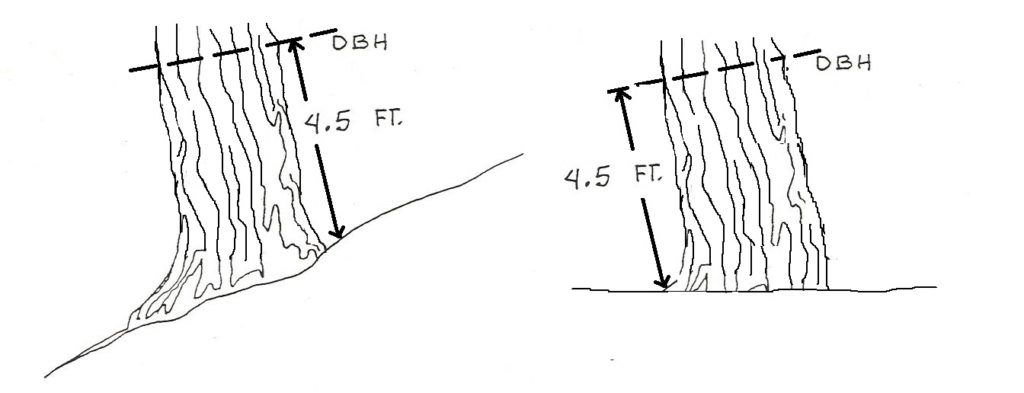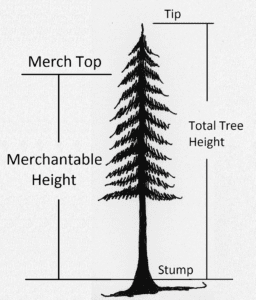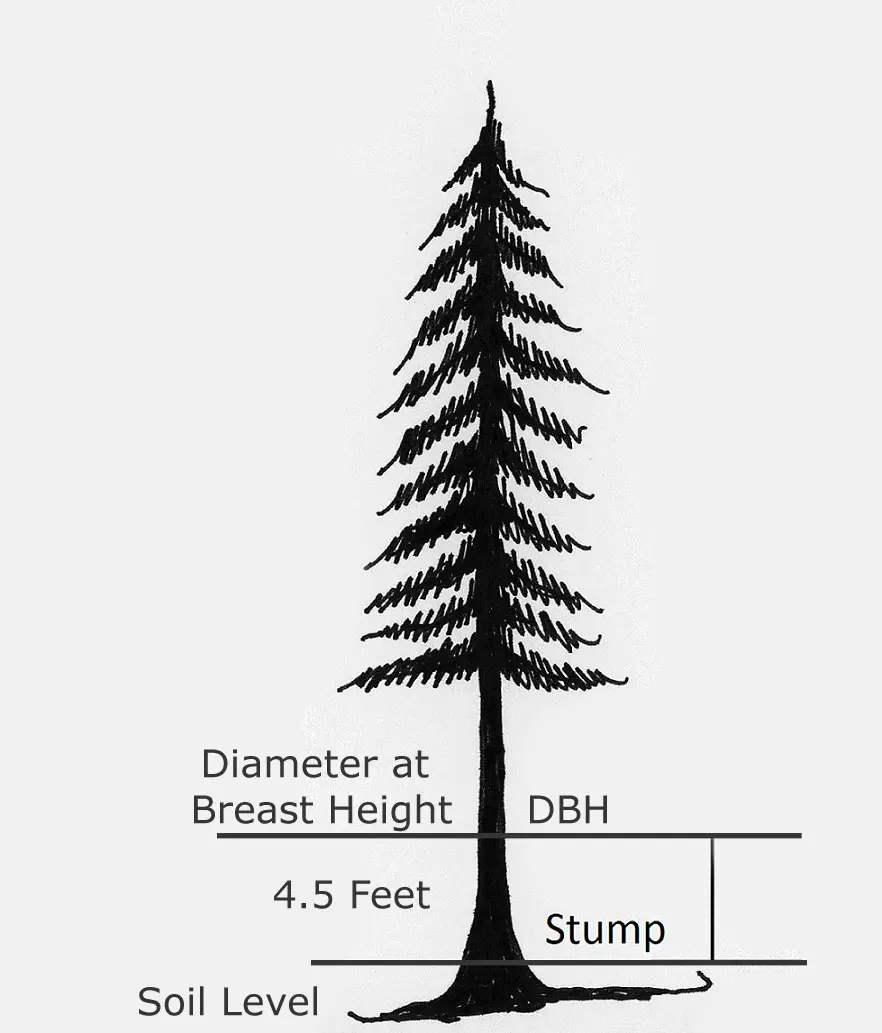How to measure tree diameter?
Trees do not grow like cylinders, but rather taper upward; a tree’s diameter gets smaller as one gets closer to the top of the tree. Trees also have butt swell, a thickening of the wood and bark at the base of the tree to support the tree’s mass (Figure 3.2). Butt swell can create a very large diameter on trees exposed to heavy wind, on steep slopes and in sparsely populated stands. Thus, to obtain truly useful diameter data, the question becomes, “Where on the tree should I measure?”
To make tree diameter measurements meaningful and easy to perform, a standard location and protocol have been developed. Diameters are measured outside the bark at 4.5 feet above the ground on the uphill side of the tree (Figure 3.3). This location, called diameter at breast height or DBH, is above most butt swell and brush. It is also at a comfortable arm position for most people.
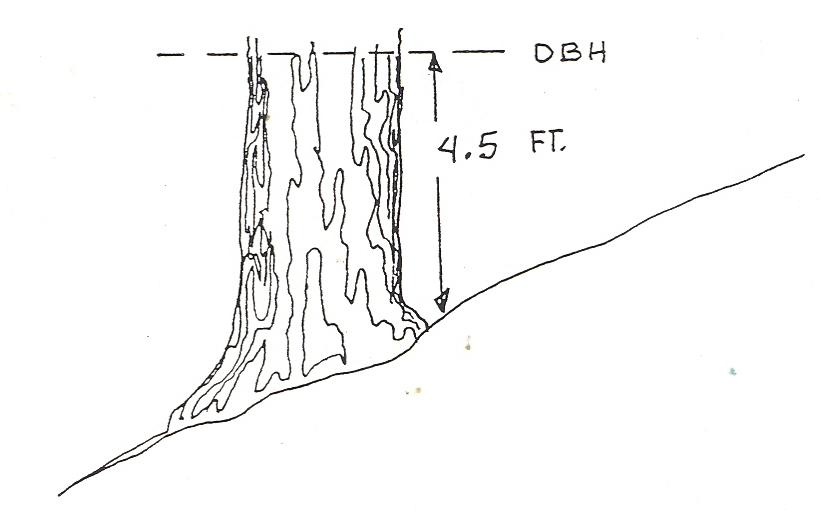
For most trees in the forest, measuring DBH is quite straightforward. However, there are plenty of irregular trees that require adaptations, as described in Figures 3.4 – 3.10. (All illustrations from or adapted from [FS] 1990.)
